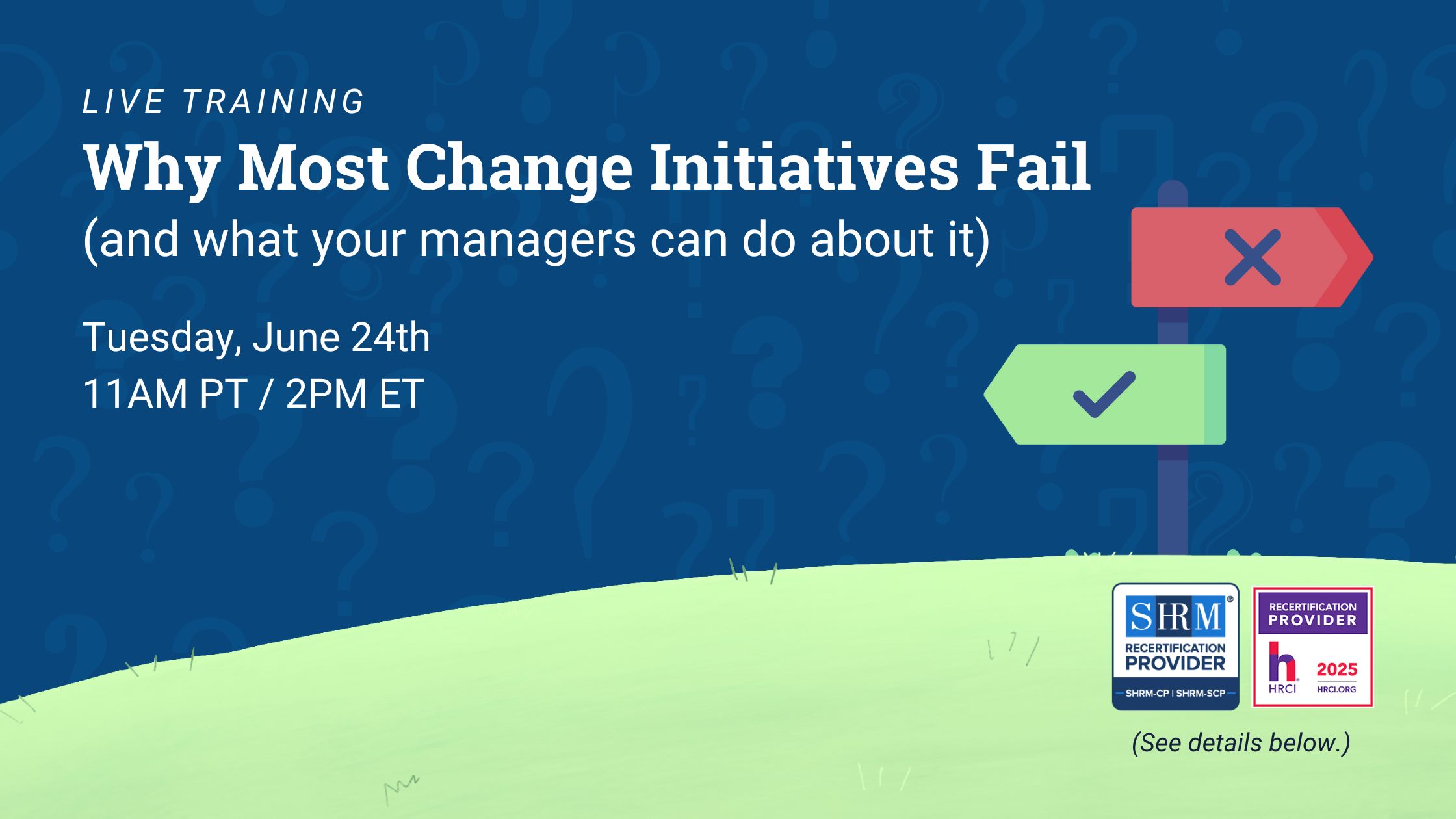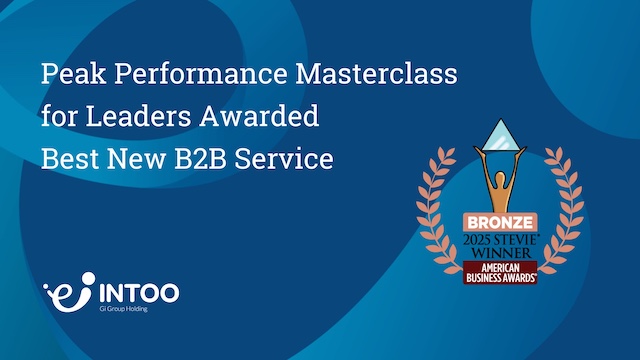Notifying employees of their layoff or termination is considered to be one of the most difficult tasks in business. Not only is the process riddled with potential legal landmines, but delivering what is often life-changing news to a colleague unearths feelings of guilt, anxiety, and even panic.
One of the main sources of stress is rooted in the uncertainty managers face when walking into a notification meeting—the meeting where an employer officially informs the employee of his or her termination. Not knowing how an employee will react to the news, nor how to respond to the possible reactions, are two main anxieties associated with the layoff process.
When a layoff or termination is done well, the affected employee will feel that they have been treated with dignity. Equally important, they will leave with a more positive impression of their employer, and more focused on the real task at hand—gaining new employment.
Is It Hard to Lay off Employees?
Indeed, for many company leaders and executives, the need to lay off employees is one of the most emotionally and professionally challenging aspects of their roles. These decisions often involve complex considerations such as the impact on individuals’ lives, the potential damage to company culture, and legal and ethical obligations.
Supporting these leaders is crucial because the layoff process can be emotionally draining and stressful. Providing them with proper tools and resources can help them better manage this difficult task. These tools may include comprehensive training on communication and empathy, legal and compliance guidance, and resources for outplacement services to assist affected employees in finding new job opportunities.
By offering support, companies can help their leaders navigate layoffs with greater compassion and professionalism. Handling the layoffs well, in turn, can mitigate the negative repercussions, maintain a more positive work environment, and preserve the company’s reputation in the long run.
7 Ways to Lay Off Employees With Empathy
This guide has been created to assist you with information and resources to prepare for and conduct employee separation notifications. It is designed to help you lay off employees gracefully and with respect for the employees affected. We’ve also included a layoff employee script you can follow to help with the process.
Below, you can find the necessary information about how to lay someone off, so read on to discover more.
1. Prepare for the notification meeting
A notification meeting, or reduction in force (RIF) notification, is where the employer gives formal notice to an employee that his or her employment has ended.
Preparing for the notification meeting is essential. To begin, nail down the logistics.
- Select a place for the meeting that will allow the affected employee some privacy. A meeting room or other neutral space is preferable to a manager’s office.
- Pick a time that will limit disruption to the business and allow the employee to leave the building relatively privately if they wish to do so.
- As you decide on the where and when, make sure you loop in others who may need to be present at the layoff notification meeting. In general, layoff meetings include the affected employee, their manager, an HR representative, and a member of the security team, if needed.
In addition, collect all the materials you’ll need for the meeting. For example, you may need an employment termination letter, COBRA paperwork, a final paycheck, a severance agreement, and items related to the severance package, such as a severance check and details about outplacement benefits to help the employee find a new position.
If you want the interaction between the employee and the manager to go as smoothly as possible, careful preparations and planning are most important. Make sure you understand your objectives.
The company’s objectives for the notification meeting are:
- To inform employees in a respectful manner that their jobs are being eliminated
- To protect the corporate and employer brand, particularly regarding their reputation, for future recruitment
- To minimize any negative impact on the employees being let go and those remaining
The notification meeting objectives for the employee are:
- To hear and understand the message as it is intended
- To retain dignity throughout the process
- To know the resources available to them to assist in their transition and what to do next
It may be easier to use a script as a guide, and you can find an example script later on in this article. A script will ensure that you convey all the necessary information and give you a chance to practice the message you will deliver and how you will deliver it. Preparing such a script for affected and unaffected employees could be a good idea.
Ahead of the notification meeting, you should try to familiarize yourself with the circumstances that led to the decision to eliminate the employee’s position. You should know what you will say about the action being taken, the reason why, and when/how it will happen. Being prepared with this information will allow you to deliver the message in the most consistent, professional, and humane manner.
2. Provide the employee with necessary resources
Be prepared to provide resources to the employee that will help them in the transition. Such resources may include:
- Human resources and benefits transition information
- Career center resources, if applicable
- Outplacement resources to assist in employees’ transition, job search, and resume preparation
- Information about applying for unemployment
- Other company or external community resources
3. Address any tough questions and emotional reactions
The separation process can be emotional for all parties, so you should be prepared for difficult responses.
- Try to anticipate questions ahead of time and have answers prepared
- Remember to have a box of tissues available
- Have additional support available for more extreme reactions, if possible, such as mental health counselors and security personnel
4. Avoid making empty promises
During a layoff conversation, employees often seek assurance about their future. While being empathetic is essential, it’s equally crucial to avoid making promises that cannot be kept. Employees may ask about the possibility of being rehired or other future opportunities within the company. While these questions can be challenging, it’s essential to communicate accurate information.
Instead of offering empty promises, convey the uncertainties of the situation while expressing a willingness to provide updates if circumstances change. Empty promises can create false hope and lead to more significant disappointment when they don’t come to fruition. They can damage trust and make the layoff experience even more distressing for the affected employee. Honesty and transparency are key to maintaining trust and showing empathy during this challenging process.
5. Explain the criteria used to make the decision
Offer a structured explanation of the layoff process. This may include the reasons for the layoff, such as economic challenges, restructuring, or other external factors. Explain the decision-making process and how it has led to this point. This can help the employee understand that the decision was not made lightly and was based on legitimate business needs.
- Uphold fairness and transparency as fundamental principles during layoffs
- When discussing the decision with affected employees, provide specific examples of how the criteria were applied in their case
6. Offer outplacement
Incorporating outplacement services into the layoff process reflects a compassionate approach to managing workforce changes. Outplacement services offer practical assistance, such as career strategy guidance, resume building, interview coaching, and access to job search resources. These services can empower departing employees to confidently navigate the job market, fostering a sense of security during this uncertain time. By offering outplacement support, you demonstrate a commitment to the well-being of your employees beyond their tenure with the company, reinforcing their value.
Moreover, providing outplacement services can mitigate the negative impact on the organization itself, including potential legal and reputational issues. By helping departing employees transition, you not only express empathy and care but also maintain a positive relationship with them, which can lead to potential rehiring or referrals in the future.
7. Be mindful of timing
The timing of delivering news about a layoff can profoundly influence an employee’s experience. It’s essential to avoid scheduling layoffs close to holidays, birthdays, or significant personal events whenever feasible. Selecting an appropriate time allows the affected individual to absorb the news without additional stressors, highlighting your sensitivity and empathy.
After the initial layoff conversation, provide the option for a follow-up meeting. This follow-up meeting gives the employee an opportunity to ask questions or share concerns that may arise as they process the news. This option underscores your commitment to their emotional well-being and provides valuable support during their transition.
 Employee Layoff Templates
Employee Layoff Templates
Below is an employee layoff script that shows how a notification meeting might occur. Although it is not meant to represent the ideal conversation, the script below can be used as a starting point in developing your own notification script as you approach a reduction in force. It covers the three main elements that are commonly covered in a notification meeting.
The notification
In the notification meeting, we suggest getting to the point quickly. The goal is to deliver the news to a colleague succinctly, with empathy and in a manner that allows the employee to retain their dignity.
Greet the employee and remember to address him/her by first name. Manager: Hi [Name]. Thank you for meeting with me today.
Deliver the verbal notice. Remember to speak slowly and calmly.
Manager: I’ve called this meeting because I must unfortunately inform you that your position with the company is being eliminated. We do not have another position for you. This means you are being laid off and Human Resources will work with you to complete your transition. Here is your official Notice of Layoff. Hand the written notice or letter to the employee. Allow the employee time to read it and process the information.
Manager: This decision was made after a long and careful review of the options, realizing that many good people would be affected. This has been a very difficult decision and was not easily made. I want you to know that it has been reviewed at the highest levels within the company and it is a final decision.
or
As you may know, we are in a time of reorganization. Although we’ve done everything possible to minimize the impact of these changes on our department, we still need to implement some very difficult decisions. I would like you to know that this action is not easily taken and is made only after a long and careful review of many options. It is a final decision.
Pause for a few seconds.
The temptation for small talk may arise at the beginning and to ramble on or over-explain after delivering the official notice. If you are able to communicate this hard news without rushing or rambling, the hard work is about 80% complete. Pay attention to your pace and delivery as your body language and intonation will help set the tone of the meeting.
Manager: Do you have any questions?
The employee will usually lead the conversation at this point. Answer questions directly, honestly and appropriately. This is where your prepared answers to the most common questions will come in handy. You should expect reactions that could range from professional to emotional behavior.
What not to say:
Don’t open with comments on the weather, current events, or the score from last night’s game, etc. No amount of small talk will soften the blow, and worse, it may cause confusion by making the news of the termination all the more unexpected than if it were delivered straight away.
Questions & objections
Objections can come in many forms. They can be expressed as a question, with the hardest often being “Why?” Other reactions surface as pure emotion, most commonly either anger, silence, denial, or threats.
If reactions reach a point that makes it impossible for you to continue the meeting, offer some alternatives:
Manager:
Is there someone I can call for you?
Would you like to take a brief break before we continue?
Would you like to leave for the rest of the day and we can continue this discussion tomorrow?
It is impossible to predict how each employee will react to news of their layoff, and the way you respond to these questions and reactions has legal implications. It is critical that you seek the support of senior managers, HR leaders, and your legal counsel to learn the boundaries of the conversation, as well as the best practices your organization has applied in past situations.
Beyond this, the best preparation will come from anticipating the most likely scenarios for each individual you are preparing to notify, and delivering the news accordingly, without going dangerously off script.
What are examples of dangerous, off-script tangents? Here are the most common:
What not to say:
Clichés, unsolicited advice, and any sentence that starts with “look at the bright side” should be off limits. Also avoid getting pulled into a discussion on the reasons behind the decision, such as being asked to explain why the particular employee was laid off and not someone else, or discussing performance issues which may have contributed to the decision.
When the conversation goes off course, we recommend referring back to the message points you opened with at the top of the meeting to get the conversation back on track.
What to say:
Manager: I know this is difficult news, and as I mentioned, this decision was made after a long and careful review and with the knowledge that many good people would be affected. In this time of reorganization, we’ve researched every conceivable option to minimize the impact of these changes on each department, but unfortunately, all those options still require us to make some very difficult decisions.
Pause for a few seconds, then give one final chance for questions or clarifications before moving towards the conclusion of the meeting.
Manager: Is everything I’ve said clear to you?
Address any additional questions that arise, and if there is none, move on.
Housekeeping Matters
What to say:
Manager: At this point, I need to go over the details of the rest of your week/day, as well as the resources that the company will provide to assist you in your transition.
We have prepared an information package that will be helpful to you throughout this transition period. It provides you with information about services like outplacement, a career assistance program with extensive resources to help you in your transition. This service will equip you with tools, resources, and coaching to assist you in making your next career decision.
I understand that this is a lot of news to take in, but we encourage you to review this information as soon as possible. If you have questions, contact [Name/Job Title].
What not to say:
Although you want to keep the meeting brief, refrain from the inclination to rush through to the end by saying something to the effect of, “I know this news is difficult, but we have a lot of paperwork we still need to get through….” Statements like this will only trigger an emotional response that will distract and prolong the meeting.
As you compose and rehearse your script, we advise you to also pay close attention to the unscripted elements—adding a pause at the right moments, refraining from negative body language and facial expressions, and maintaining a calm pace and tone in your speech. These nonverbal cues are subtle but can help you establish a professional yet empathetic environment while steering the discussion forward.
Ready to Start Laying off Employees With Kindness?
The Peak-End rule in psychology states that we judge an experience largely based on how we felt at its peak (the most intense point) and at its end, rather than based on the total sum of the experience.
Applying this rule to layoffs and terminations shows the importance of great preparation, delivery, and ending the most positive and supportive note possible. The notification meeting will set the tone and expectations for the final stages of an employee’s time at a company, so do your best to leave them with the impression that the company truly cares about them.
Solutions like career assistance and outplacement not only extend a helping hand to impacted employees, but also help cement an employee’s final impression of your company. These transition benefits allow your employees’ final experience with your brand to center around your willingness to assist them in pursuing their next career.
For more information, download the Complete Guide: How to Conduct a Layoff Notification Meeting. Please refer to these tips as guidelines and best practices, and be sure to consult with existing protocols and legal counsel.
Don’t miss an important step in your Reduction in Force process. Download our Reduction In Force (RIF) Checklist. One important step in the RIF process is offering outplacement. INTOO helps employers protect their brand and do right by their workforce by transitioning employees to land their next job 2.5 times faster than the national average time it takes to find employment. Designed for employees of all levels, industries, and backgrounds, INTOO’s coaching-first, award-winning online platform accelerates career transition by connecting candidates with career coaches faster and by providing personalized guidance for each individual. Learn more by scheduling a demo.



 Employee Layoff Templates
Employee Layoff Templates








